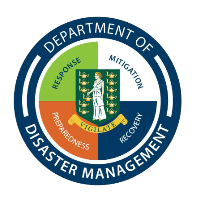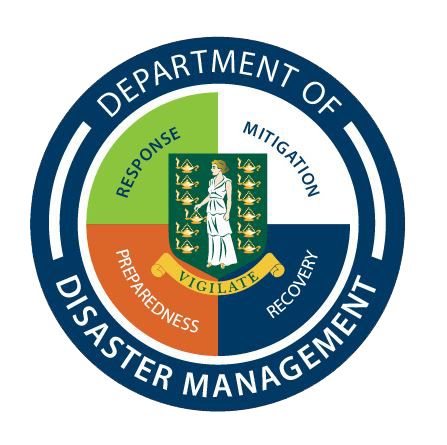Tuesday, October 12 – A damage assessment team visited a number of sites throughout the Territory that were impacted by flooding and landslides following the passage of Tropical Storm Otto.
The team which consisted of representatives from the Departments of Disaster Management (DDM), Town and Country Planning and Public Works were accompanied by Dr. James Joyce, an Engineering Geologist and Land slide expert from the University of Puerto Rico, Mayaguez who is in the Territory to assist with the assessment.
At a meeting held yesterday at DDM, the team identified a number of causes and recommendations for addressing the problems.
Mr. Karl Payne a Hydrologist from the Caribbean Institute for Meteorology and Hydrology (CIMH) in Barbados who is in the Virgin Islands to support post flood assessment indicated that a rainfall frequency analysis was performed in keeping with the guidelines of the World Meteorological Organisation.
Mr. Payne shared that, “The analysis revealed that the return period associated with the rainfall event of 2003 was a five-year event, meaning that the recurrence interval is on average every five years.”
He added, “By contrast the 2010 event, which had a total rainfall of 10.2 inches on October 6 corresponds with a return period of 50 years. In fact, the DDM reported a total of 24 inches of rainfall over the three-day period. However, the analysis would have been more reliable if more historical data were available.”
This is one of the areas the DDM will seek to address.
The primary reason that led to flooding was the large volume of rainfall associated with the storm event, which would have overwhelmed the existing drainage infrastructure.
Dr. Joyce accompanied officers from the Town and Country Planning and Public Works Departments to examine a number of sites inundated with flood and impacted by landslides. Dr. Joyce supported the comments made by Mr. Payne with respect to the main cause of flooding being attributed to the intense nature of the rainfall event. He discovered that most of the problem was related to drainage and water coming off roadways.
The overflowing of ghuts was as a result of the large number of rainfall in a short period of time combined with the ghuts or culverts being clogged with rocks and debris. The issue of uncontrolled runoff added to the problems that occurred. There were very few slope failures identified. Most of the slope problems were associated with erosion from runoff.
Dr. Joyce is the author of the geological engineering maps completed for the BVI in 2005. These maps indicate the highly vulnerable areas for landslides and erosions, mainly around the ghuts. In terms of landslide activity, this event was comparable to that of 2003 but the effects were not in the same places, which could be as a result of a different pattern of rainfall and wind.
A number of recommendations will be put forward to Cabinet, which will include the need to collect and archive climatic data, the need to align and investigate the correlation between rainfall events and economic losses, greater protection of ghuts and waterways, systems for clearing and maintaining these waterways, controlling of surface runoff through the use of properly engineered drainage system that allow for percolation, control and access for clearing and a revision of the planning and development process to allow for tighter controls and inspections.
The team is expected to review plans for addressing drainage in many hazard prone areas such as Pockwood Pond, Fish Bay, Purcell Estate and Capoons Bay. It is envisioned that any works to be performed in these areas will require long term planning which will include a detailed study of the area and the redesign of drainage structures based on the updated return period calculations.
The team will continue to carry out damage and needs assessment survey throughout the Territory in the coming days.
###





